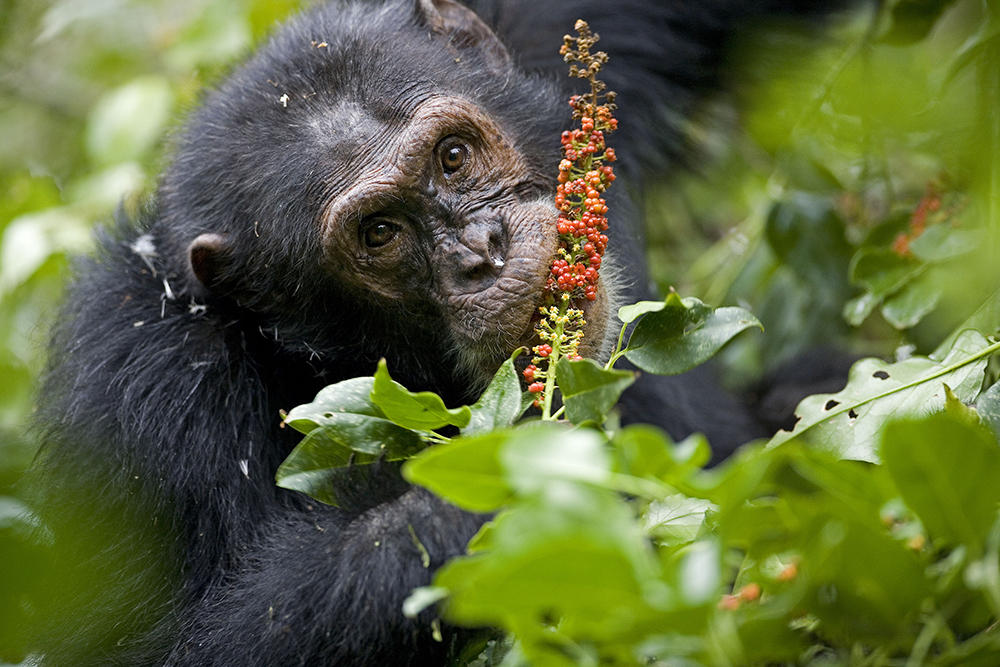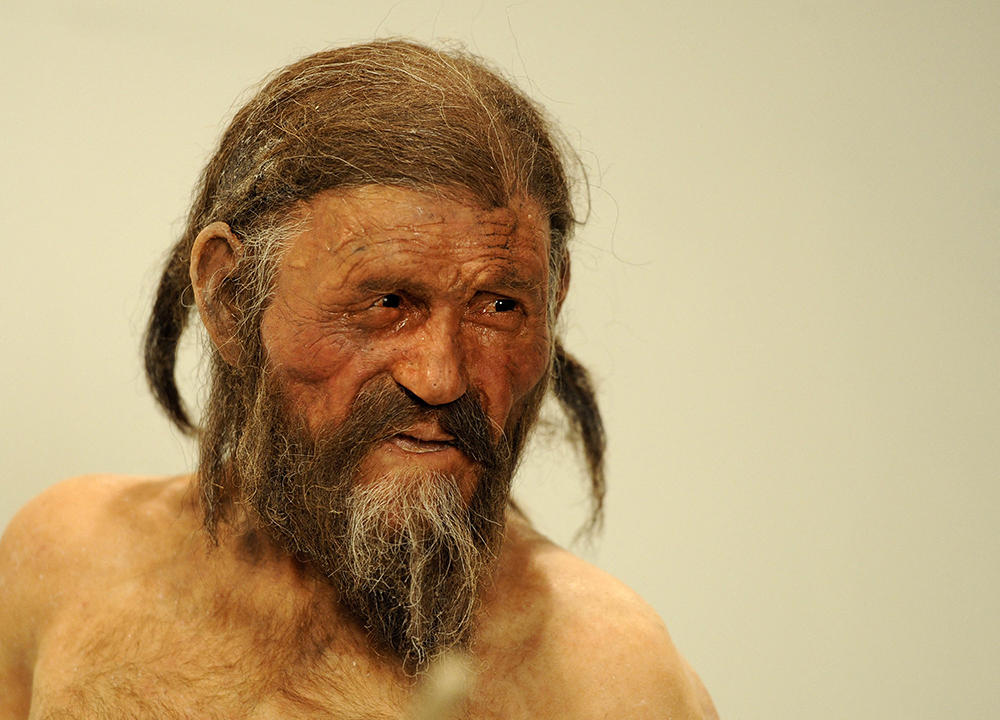You are here
Shedding new light on the adventure of humanity
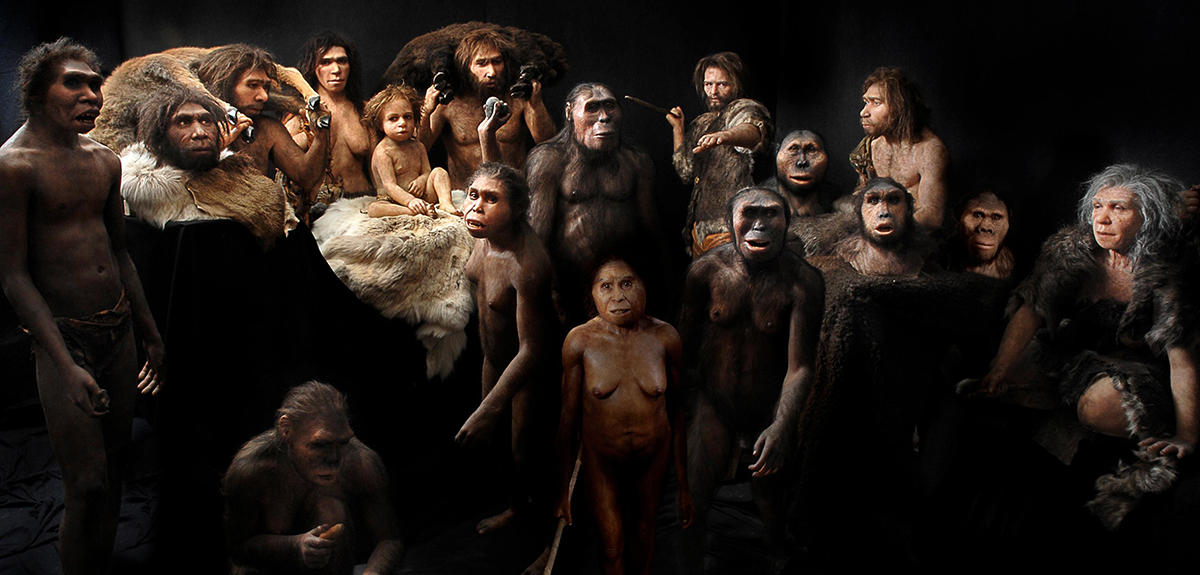
There are different approaches for tracing the history of humanity. In genetic anthropology, your team is studying this evolution from both a biological and a cultural perspective…
Évelyne Heyer:1 Yes, we start from the assumption that human beings have transmitted not only their genes but also their culture, and that this has had an influence on their evolution. I’m the director of the Éco-Anthropologie2 research unit, which combines the life sciences with the humanities and social sciences, including population genetics, ethnology, anthropology, linguistics, primatology and historical demography. In short, eco-anthropology offers an original perspective by studying how human populations shape cultures and environments, and how ‘in turn’ the latter also affect the biology of our organisms through evolution.
Was there a trigger, an enigma, that prompted you to adopt this approach?
É. H.: Yes, in a way. For my thesis on human populations I was trying to understand why there could be a strong incidence of a rare genetic disease within a given group. I soon noticed that the concepts learned in population genetics and the theory of evolution could not fully explain such prevalence. A cultural factor was lacking. So I decided to explore this dimension in the biological evolution of populations.
How have recent discoveries in genetics revolutionised what we know about the history of human evolution?
É. H.: The most significant progress of the past 20 years has been to facilitate individuals’ access to genetic data, which was made possible by high-throughput sequencing. For example, someone’s entire genome can now be sequenced in less than a day.
Our DNA is in a sense a mosaic of various fragments handed down by our forebears. Comparing these fragments among individuals from different geographic zones makes it possible to determine whether they have common ancestors, and in that way trace migration patterns. This also provides a more precise understanding of how the structures of kinship affect genetic diversity: they could favour the migration of women rather than men, and facilitate or limit marriages among relatives.
Studying DNA also gives us access to new cultural information, by identifying ways of being in the world that we would not otherwise know about. Investigating the genes involved in dietary adaptations – the ones that enable the digestion of certain foods, for example – reveals the extent to which humans have adapted to their environment.
There has been much debate on the differences between human beings and the great apes. What does genetics contribute to this sensitive issue?
É. H.: It has enabled us to estimate the date when the two lineages split, one evolving towards chimpanzees and bonobos and the other towards humans. It is thought to date back 7 million years. We also know that, from the genetic point of view, there is only a 1.2% difference between a human and a chimpanzee. In other words, only 1.2% of the DNA differs between the two species. For the moment, no single gene has been identified as determining whether one is a human or a chimpanzee. So it must be more complex than that – the difference is more likely due to disparities in the expression of genes operating in networks.
Do the great apes also have a culture?
É. H.: Yes, as has been demonstrated. In our research unit, my primatologist colleague Shelly Massi has shown that the use of both hands to break rocks is not specifically human. It is also part of the culture of gorillas. Another of our primatologists, Sabrina Krief, has shown that chimpanzees practise self-medication using certain plants, which she found to contain effective active substances. Some groups also exhibit distinct grooming behaviours and have their own ways of looking for and preparing food. It’s fascinating to see these specific cultural attitudes, which vary from one group to the next and cannot be explained by environmental differences.
Cultural innovations have also proved to be decisive in the evolution of the earliest hominids. Prehistorians, including Sandrine Prat,3 have shown that the first tools found in the human lineage, in the broadest sense, existed well before the Homo genus and were contemporary with Australopithecus.

The way hominids walk, or rather the way this has evolved, turns out to be much more complex than thought a few decades ago. Why is this?
É. H.: We now know that chimpanzees’ locomotion on two legs or all fours, walking on their joints, is only a specialisation. A look at our common ancestor reveals something in between a biped and a non-biped. This is in fact a quantitative and not a qualitative criterion: what varies from one lineage to another is the amount of time spent on two legs. The ‘Toumaï’ femur, found in Chad in 2001, shows that it was mostly a biped, but not solely: it was also arboreal and quadrupedal.
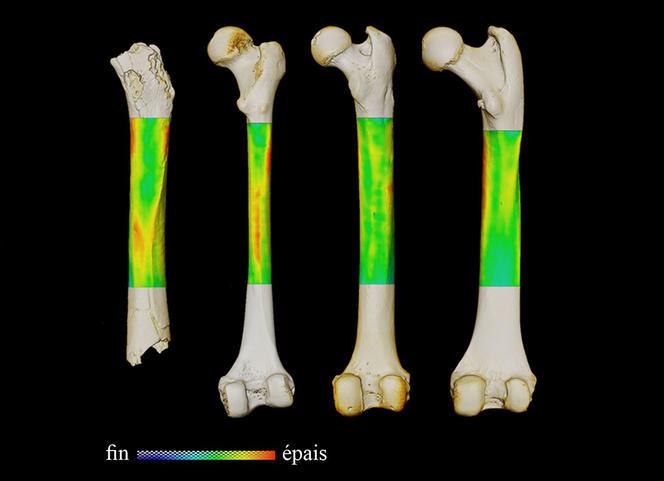

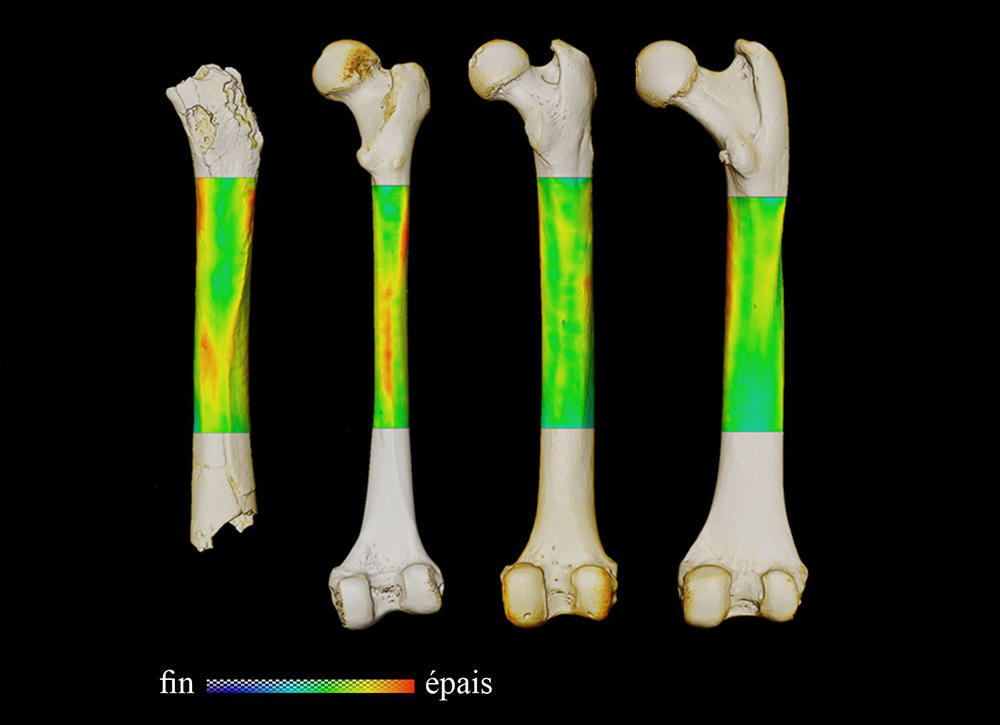
A turning point in human evolution took place about 2 million years ago, when the first hominid (either Homo erectus or Homo habilis, we don’t know which) migrated out of Africa. This was revealed by the discovery of the Dmanisi mandible in 1991, in modern-day Georgia, at an important site where Dominique Grimaud-Hervé, a palaeoanthropologist at the HNHP,4 has done much work.
In that period, the Homo lineage became essentially bipedal. The form of the pelvis changed and the pelvic canal (which the child passes through at birth) narrowed, while the size of the brain, and hence the skull, increased. This is the well-known obstetrical paradox that makes human childbirth complicated. By natural selection, earlier birth was favoured in our species – to the point that an infant’s brain is only 25% its adult size at birth, compared with 40% for chimpanzees! Our brain continues to develop after birth for much longer than in other species, going through a period of apprenticeship based on social interactions that is essential to the construction of the individual.
It has often been said that articulated language is exclusive to Homo sapiens. Is this really the case, or did the Neanderthals also have language?
É. H.: We have an exceptional faculty of language that is not found in any other species. In my opinion, it is one of the key characteristics behind Sapiens’ evolutionary success. But the capacity for language is not simply a matter of anatomical abilities. Whenever individuals were capable of conceiving symbols and representing concepts, which was the case with the Neanderthals as well as Erectus, it is reasonable to assume that they had a language. The Sapiens and Neanderthal branches diverged 600,000 years ago.
What are their genetic differences?
É. H.: Surprisingly, research has shown that there are not that many highly different genes between the two species: only about 60 of them vary systematically, meaning that all Neanderthals carry identical mutations that are not found in Sapiens. Researchers are now trying to elucidate the effects of these differences, even though we still don’t fully understand the function of certain genes in Sapiens… In addition, we now know that all genes are expressed in networks and interact with one another. Much remains to be discovered in this area…
Why do we hear so much about the ‘branching’ of evolution today?
É. H.: Because advances in genetics have shown that there has been interbreeding between Sapiens and Neanderthal, Sapiens and Denisovan, and also between Neanderthal and Denisovan. There are many intertwining branches. Studies by researchers at the Max Planck Institute on a phalanx discovered in Denisova Cave in Siberia in 2008 have been decisive in this respect, enabling the discovery of a new human lineage, the Denisovans. Based on analyses of DNA found in soil from the cave, they have also formulated a scenario spanning 100,000 years of the history of human occupation at the site. It was occupied first by Neanderthals, then by Neanderthals and Denisovans. For unknown reasons, when the climate turned warmer, only the Neanderthals remained. The Denisovans later came back, then the Neanderthals left, and finally all three (Neanderthals, Denisovans and Sapiens) cohabited. Research on this important archaeological site was made possible by extraordinary technological developments and investment worth millions of euros.



Are the emergence and evolution of our species, followed by its expansion beyond Africa, all due to a series of adaptations?
É. H.: Research clearly shows that the Homo lineages established networks of populations, each of whom effected minor innovations and genetic and cultural exchanges, ultimately allowing the emergence of a new species. Yet so far, the history that can be retraced remains fragmentary, because human remains in Africa can only be found in places where the climate is dry enough to enable their conservation. This limits us to the Rift valley, Chad, South Africa and Morocco.
Has migration been an essential factor in the development of our species?
É. H.: Yes, but that does not mean that everyone migrates. Our genome reveals the history of these migrations as well as local adaptations, with populations stabilised over several thousands of years. Why did Sapiens move around so much? I don’t see any climate-related or ecological reason, because there were not that many of us and there was no food shortage that would have justified our leaving Africa. I believe that it was unintentional, that our species migrated without realising it: each generation moved a few kilometres until we ended up colonising the whole planet, simply by going to take a look at ‘the other side of the hill’ out of curiosity. Only certain places required real technological and biological adaptation, since human beings are astonishingly versatile.
Did this movement have repercussions on our genetic diversity?
É. H.: Yes, because it limited the differences between populations. Remember that two individuals chosen randomly from anywhere on the planet are 99.9% identical genetically! Small variations could arise from local accommodation: for example, the inhabitants of the Tibetan Plateau have adapted to altitude, in particular through genes inherited from the Denisovans. But since humans left Africa, the only genetic diversity that results in a major phenotypic difference (i.e. an observable feature) is skin colour. This corresponds to an adaptation to sunlight. In extremely sunny regions, dark skin provides better protection against the harmful effects of certain UV rays.
It was thought that once the species left Africa, Sapiens encountered less sunny conditions, as in Europe or continental China, leading to the selection of fairer skin tones that improved the assimilation of vitamin D produced by UVB.5 But now certain studies of ancient DNA show that it wasn’t that simple. The various genetic mutations that code for dark skin colours can be found in Europe in the surprisingly recent past. It is the case, for example, of the genome of a young woman who died 6,000 years ago and whose remains were found in Denmark. It seems that adapting to lesser sunlight by having fairer skin is all the more important with a diet low in vitamin D.
Therefore the selection of fairer skin in Europe no doubt took place during the transition to a nutrition less rich in vitamin D, in the Neolithic, which prehistorians date between 6,000 and 3,000 years ago in Europe. This means that, according to the current state of knowledge, the typical pre-Neolithic European, between 40,000 and 5,000 years ago, was more likely dark-skinned or even black-skinned – with blue eyes, because another mutation indicates that this trait was very common in Northern and Western Europe.
How do you conduct your fieldwork?
É. H.: In Central Africa, I work with ethnologists from my unit who have been doing research in the region for more than 20 years. They are familiar with the populations, have access to the authorities, and know local colleagues. This enables us to carry out well-prepared interdisciplinary investigations. In Uzbekistan, I operate in villages with researchers from the Academy of Sciences. In Siberia, I also collaborate with Boris Chiclo, an ethnologist from my unit, who works upstream to find local contacts. We always form teams that combine researchers in both biology and the human sciences.
Some populations have moved very little over long periods of time. What examples do we have of their encounters with other populations arriving in their region?
É. H.: In Central Asia, the Yaghnob, the last speakers of Eastern Indo-Iranian, a language of traders along the Silk Road, have remained relatively stable for more than 3,000 years. But there have also been many migrations in that part of the globe, most notably with the arrival of the ‘Turks’ 2,000 years ago. Other populations that were already present intermingled to a greater or lesser degree with those of the Iranian plateau. Meanwhile, in South America the peoples of Tierra del Fuego have a very different phenotype from the rest of the continent. They are descended from the major arrival of Sapiens in the Americas about 15,000 years ago via the Bering Strait. Moreover, we now know that there was a rather long phase, lasting several millennia, of stable settlement around the strait, which became a refuge zone during the glacial period.
What results indicate that there has been a great deal of population mixing in Europe?
É. H.: In 2015, a groundbreaking article6 showed that the population of Europe originated from several massive waves of settlement. First there were the early hunter-gatherers, who arrived 40,000 years ago, then the Neolithic migrations who brought agriculture from Asia Minor 8,000 years ago, and lastly, during the Bronze Age, the so-called ‘Yamnayas’, who came from the steppes around the Caspian Sea 5,000 years ago. This last wave is as important in our genome as the previous ones, but it did not affect certain populations, especially in Sardinia. In 1991 a Neolithic mummy called Ötzi was found in the Alps. When his DNA was compared to that of modern Europeans, it turned out to resemble that of the Sards. Ötzi’s genetic proximity to these peoples could thus be explained primarily by the fact that he had lived before the Yamnaya migrations.
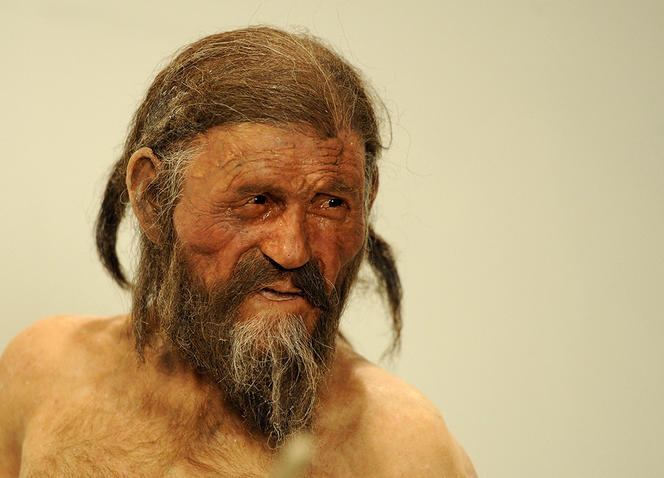
Why is it important to understand the interactions between biological evolution and culture?
É. H.: All human groups want to differentiate themselves from their neighbours, giving rise to cultural differences. For example, we can study the cultural factors that led to genetic differences among populations. In the case of Central Asia, language played a key role: people preferred to marry someone who lived 2,000 kilometres away but spoke the same language, rather than someone from the neighbouring village who spoke a different idiom. Marital and other social norms, like the number of children per family, also favour diversity. Other variations have to do with cultural choices linked to food. For example, the Inuit, with their diet rich in omega-3, have evolved over the generations to select a mutation that helps them digest that type of lipid.
Has the research of the palaeoanthropologist Yves Coppens, who died on 22nd June last year, inspired you in your career?
É. H.: He studied older periods and different types of objects, but I admired his capacity to integrate new research findings, even when they didn’t align with his own thinking. That kind of mindset is especially crucial in an ever-changing science. He taught me a lot on a human level, and I share his desire to transmit knowledge. Origins, migrations, cultures, genetics…
Your work touches on a number of hotly debated societal issues. How do you share your findings with the general public?
É. H.: I contributed to an exhibition entitled ‘Us and Them – Prejudice and Racism’ in 2017-2018 at the Musée de l’Homme . At the time I was head scientific curator in charge of the museum’s renovation. We thought about the knowledge that we could put forth on social issues like racism by cooperating with historians and sociologists. I also try to find time to write books and articles, making them as accessible as possible. My book L’Odyssée des Gènes aimed to show that we all have migrant ancestors – definitively a hot topic of discussion these days.
- 1. Director of the EA eco-anthropology research unit (CNRS / MNHN) and professor of genetic anthropology at the MNHN.
- 2. CNRS / MNHN.
- 3. Researcher in the CNRS Great Rift Valley interdisciplinary group.
- 4. Histoire Naturelle de l’Homme Préhistorique (CNRS / MNHN / Université de Perpignan Via Domitia).
- 5. Their action allows the liver to metabolise a particular form of vitamin D, commonly found in blood and transformed by the kidneys into the active form of the vitamin.
- 6. “Massive migration from the steppe was a source for Indo-European languages in Europe,” Haak et al., Nature, 522, 207, 2015.
Explore more
Author
Specializing in themes related to religions, spirituality and history, Matthieu Sricot works with various media, including Le Monde des Religions, La Vie, Sciences Humaines and even Inrees.




